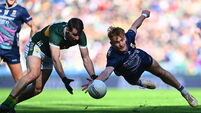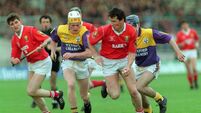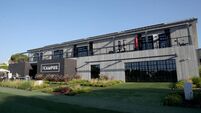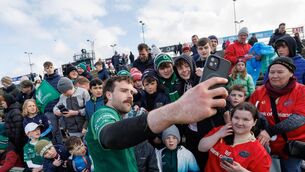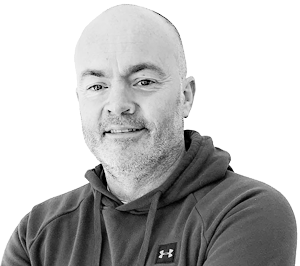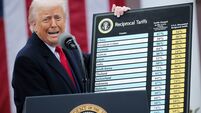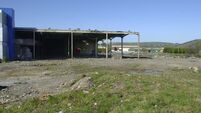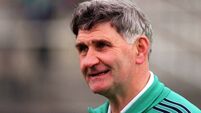Paul Rouse: Getting lost in running is one of the great escapes from the world

RUNNING AROUND THE PARK: Getting lost in running is one of the great escapes from the world; there is a profound exhilaration to running around the Fifteen Acres in the cold dawn. Pic: Stephen Collins/ Collins Photos
It’s early on a Wednesday morning and the Phoenix Park is still empty. The sun is pushing slowly up behind the city. There’s not a cloud in the sky; the air is clean and cold.
The darkness of the trees frames the fields of the Fifteen Acres. There is nobody on the track that loops the playing fields and nobody kicking at the goalposts.
The advice is never to run with an injury – and certainly not with the one that has buckled my knee into a perma-limp. That makes sense.
But there is also sometimes a logic in running.
The best way to explain it is that this is a walk that has become a run, accidental exercise after a few years of being stuck in a low gear.
In truth, what’s happening is more of a waddle than a run, but being out in solitude on grass on a spring morning is a pleasure beyond words.
How did this happen?
There is a small library of books that examine why people run. There is, for instance the one written more than two decades ago by Bernd Heinrich (entitled ). Heinrich’s training as a biologist and nature writer, as well as his personal experience of being an ultra marathon runner saw him combine science and psychology and philosophy in search of an answer to the question.
There are other books, including the hugely popular by Christopher McDougall and Adharanand Finn’s . There are also newspaper articles, websites, podcasts and documentaries which explore the passion to run and its apparent primal impulse.
On this morning in the Phoenix Park, there is no doubt that it is more than just an impulse to exercise that is going on.
In this instance, there was actually no decision at all made to run. It more or less just happened.
In this running, the impulse of place is of fundamental importance; the Phoenix Park is remade as John Prine’s castle of memories.
It was here on the hills beside the Magazine Fort that many of us from country clubs slogged in winter and spring to find the fitness for summer football and hurling. It was something of a rite of passage to labour up the brutal hill that slopes on the opposite side of the fort to the River Liffey.
Nearly worse was the Kyber Pass, the long steady climb back up from the carpark at the back of the fort up to the road beside the Pope’s Cross.
The sprint up to the Magazine fort is short and vicious, but the Kyber Pass run is much worse psychologically because it never seems to end.
Most useful for football fitness though is what Frank McNally once described in ‘An Irishman’s Diary’ in the as a “little two-fingered ravine system” between the Magazine Fort carpark and the Fifteen Acres.
The undulations were partly formed from the years when that area of the park was used as a practice ground for British artillery.
It’s an ideal place for runs of different lengths and the roiling nature of the hills make for great adventures on dark nights with no lights to assist. The eyes adjust, but never fully.
The castle of memories is also flooded with the many hours spent in the park around the goalposts. These were evenings spent in twos and threes in endless kicking, or in solitary practice with a bag of balls.
It is true that coaching matters. But the very best way to learn to kick a ball well is still to go to a field and spent hour after hour kicking at posts.
April was always difficult in the park. The wind that blows across the grass between the trees never seemed to weaken, the air was still cold, the ball heavy, the posts still narrow.
May was different, everything changed. The thing that matters is to get the far side of April in good shape.
April doesn’t matter anymore. The only question now is when to stop this running. I’ve gone further than I might have thought possible and the knee is manageably sore.
That being said, there is also the considerable matter of the heart and lungs which are upset at what is being asked of them. As the old seanfhocail might have it: Is brúid í an dara ciliméadar (“The second kilometre is always a beast”).
Deflection is the only option and on this morning that means stepping back into the past. Down around the small car parks that fringe the Fifteen Acres, I see ghosts in the trees. They are getting out of their cars and stepping off bicycles. They have gear bags and footballs.
It’s like the scene from ‘Field of Dreams’ where the ghosts of Shoeless Joe Jackson and seven other Chicago White Sox players wander out from between corn stalks and play baseball on a field on Ray Kinsella’s farm.
There’s still nobody in the park when I slow to a walk.
Getting lost in running is one of the great escapes from the world; there is a profound exhilaration to running around the Fifteen Acres in the cold dawn. Even if that running is really just walking quickly.

